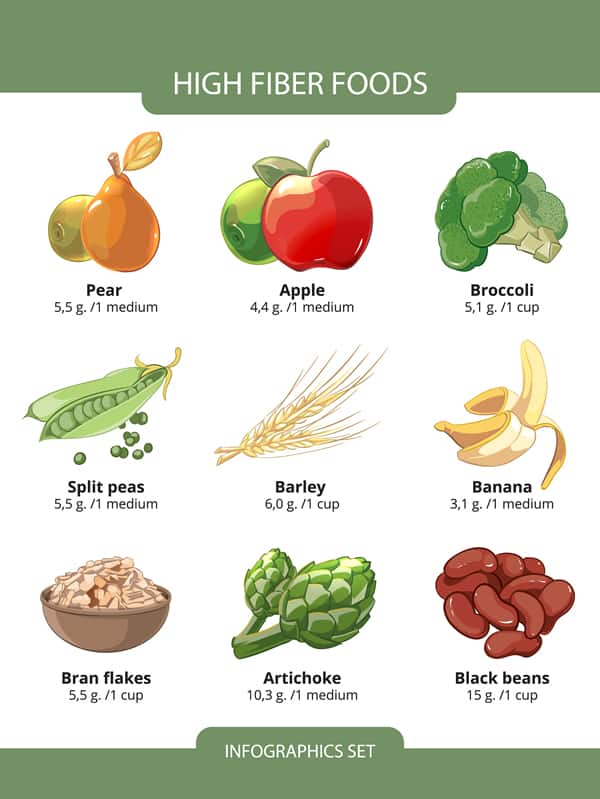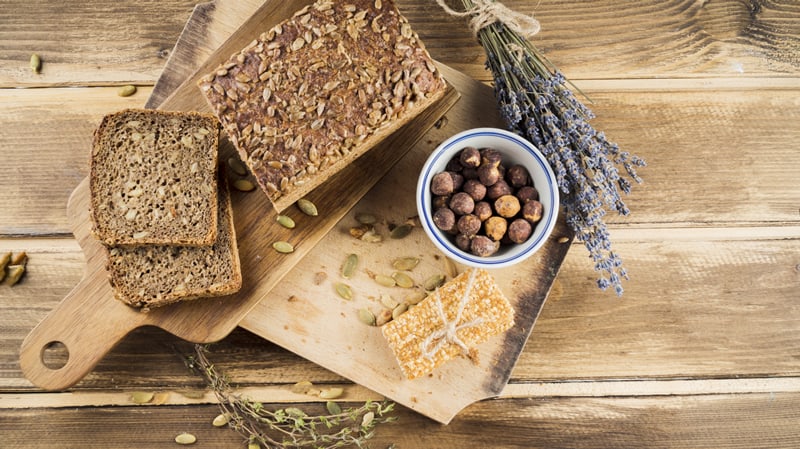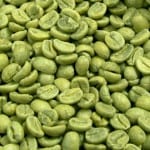According to some recent studies and the World Health Organization (WHO) standards, everyone should eat a minimum of 25 grams of fiber every day. However, a larger intake of about 40 grams of fiber per day is considered more appropriate. Nutritionists and weight-loss experts suggest eating 30 to 40 grams of fiber every day to lose weight. If you are overweight, you can get back to shape by increasing your dietary fiber intake.
How does fiber intake help you lose weight?
A diet rich in fiber keeps you fuller for a longer period of time. It is because the fiber takes longer to break down and get digested compared to a diet rich in simple carbs. When you are feeling full and satisfied, you don’t reach for unscheduled snacks and cookies. Overall, you tend to eat less and it reflects on your weight that drops as you continue with your high-fiber food. When you aim to achieve 30-40 grams of fiber intake from your food, your food choices improve overall. This has an all-around impact on your health including your weight.
When you try to meet your daily quota of fiber intake, you start eating more whole grains, fruits, and veggies — that is where you find more fiber. For someone targeting weight loss, this is a good thing that instead of counting calories you are stuffing yourself with more veggies, fruits, and whole grains.
What are the other benefits of eating more fiber?
Fiber is an important nutrient for health. It helps reduce cholesterol that in turn prevents heart diseases. Since a fiber-rich food takes longer to break down and digest, it helps diabetic people by slowing down the supply of nutrients to the body. A major part of the digested food becomes glucose and gets into the bloodstream. A diabetic patient, therefore, may get a lot of sugar in a little time if he eats a carb-rich food. But if he eats a more fibrous food, the digestion will slow down and the body will get smaller doses of sugar over an extended period of time. Therefore, foods with more fiber in them are healthier for diabetic people.
Another major benefit of having more fiber in your food is that it keeps the bowel movement in a healthy state. With this kind of food, you will never struggle with constipation. How does this happen? It depends on the kind of fiber you eat.
Types of dietary fibers
When it comes to food, there are 3 types of fibers. These are soluble fibers, insoluble fibers, and fermentable fibers.
Both soluble and insoluble fibers help in digestion, but they have different roles. Soluble fibers come from things such as nuts, oats, and seeds. In the digestive tract, the soluble fibers act like a broom that sweeps, cleans, and pushes the food waste down the digestive tract. Insoluble fibers come from leafy vegetables, cabbage, and brown rice. These fibers promote bowel movement and help the passing of stool. These fibers are non-digestible so they easily get added up to the stool and increasing its bulk.
The fermentable fibers come from foods like garlic and beans. They play a very important role in the overall digestion of foods. They do this by promoting the growth of good bacteria in the digestive tract. These bacteria act similar to probiotics. You can learn more about the two types of fiber here.
How can you get 30 grams of fiber from your food?
To get 30 grams of fiber, you will need to eat 8 to 9 apples or 12 to 15 cups of broccoli. Since eating so many apples or cups of broccoli every day is not practical, you will have to draw your quota of fibers from different foods that you eat on a daily basis. Rather, you will have to include some of the more fibrous foods in your daily diet.
To conveniently cross the 30-gram fiber quota, you should aim to consume at least 10 grams of fiber in each of the 3 meals you eat every day. For an idea of how much fiber your favorite foods have, let me tell you that a medium-sized pear offers ~6 grams of fiber so does half an avocado. A cup of oatmeal has ~4 grams of fiber and quinoa has ~5 grams. Barley has a huge content of fiber — ~8 grams for every 1/4 cup. Chia seeds offer 10 grams of fiber per 30 grams and chickpeas have ~9 grams of fiber per 1/4 cup.
Other foods that have high amounts of fiber include:
- Avocado
- Raspberries
- Pistachios
- Apples
- Pears
- Roasted Chickpeas
- Artichokes
- Blackberries
Here is a list of some regular foods that are rich in fibers (Infographic):
 Cereals: Eating whole grains compared to refined varieties of cereals always promises to supply more fibers to your body. Avoid added sugar in your cereals. Oat-based muesli and Bran flakes offer up to 10 grams of fiber in a 50-gram portion.
Cereals: Eating whole grains compared to refined varieties of cereals always promises to supply more fibers to your body. Avoid added sugar in your cereals. Oat-based muesli and Bran flakes offer up to 10 grams of fiber in a 50-gram portion.
Bananas: A medium-sized banana provides 3 grams of fiber. But eat your banana just ripely, not overripe. An overripe banana is more sugar than anything else.
Apples: Apples are not a big source of fibers but they still supply 2 to 3 grams of fiber from a small apple of 80 grams.
Nuts: Nuts are another source of high-quality fibers. For every 30 grams, they supply 2 grams of soluble fiber.
Wholegrain Bread: White bread does not contain much fiber while wholegrain bread has up to 2 grams of fiber per slice of bread.
Baked Potatoes: Potatoes with skin on has more fiber. A medium-sized baked potato with the skin on has 4 grams of fiber.
Wholemeal Pasta: Whole-wheat spaghetti contains a high 8-gram of fiber from every 75 grams portion.
Pulses: Lentils, peas, and beans are good sources of fiber. 150 grams of baked beans provide 6.8 grams of fiber whereas 100 grams of boiled lentils offer 8 grams of fiber.
Can you overeat fibers?
Yes, it is possible to overeat fibers. This is more likely when you are taking fiber supplements. When you overeat fibers, you will feel it. Bloating, discomfort, nausea, gas, and even constipation are some of the signs that you have eaten more fibers than the dietary guidelines for you.
Final thoughts
A healthy intake of dietary fiber is good for your health. If you are overweight, it can help you in your weight loss plan or maintain a healthy weight. We have discussed various items that provide good amounts of fiber. You can include these items in your diet and maintain a good fiber intake.
Sources:
https://www.womenshealthmag.com/weight-loss/a19919866/how-much-fiber-do-i-need-to-lose-weight/
https://www.shape.com/weight-loss/food-weight-loss/fiber-for-weight-loss-plan
© 2016-2021 by Overweight.net, an LiVenture. All rights reserved. No part of this document may be reproduced or transmitted in any form or by any means, electronic, mechanical, photocopying, recording, or otherwise, without prior written permission of LiVentures.





